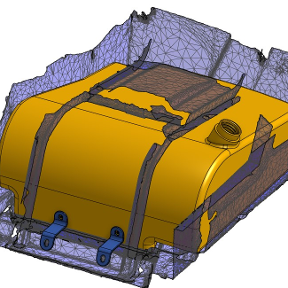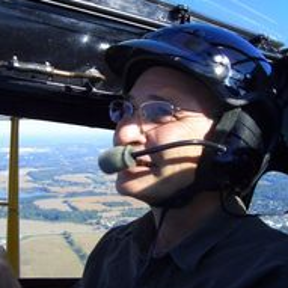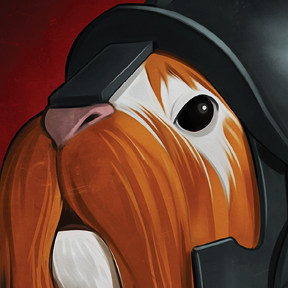Welcome to the Onshape forum! Ask questions and join in the discussions about everything Onshape.
First time visiting? Here are some places to start:- Looking for a certain topic? Check out the categories filter or use Search (upper right).
- Need support? Ask a question to our Community Support category.
- Please submit support tickets for bugs but you can request improvements in the Product Feedback category.
- Be respectful, on topic and if you see a problem, Flag it.
If you would like to contact our Community Manager personally, feel free to send a private message or an email.
Best Of
Re: not defined sketch - Any chance someone can run me through step y step how to fix this? Thank you
Although glen_dewsbury doesn't mention this, he has made use of constraints (instead of dimensions) to simplify the sketch. Take the time to explore "constraints" - this will take you to the next level in your work. Good luck
Re: Make part with conditional transparency?
Here's an example using my Part Color feature.
Re: Onshape vs. Fusion360
Just wanted to drop my 2c… I've been using Fusion 360 as a hobbyist for nearly 10 years and I've never been entirely happy with it. Yes, it has more features than Onshape but the problem is the basic stuff doesn't work reliably. It keeps breaking my designs. Sketch is riddled with bugs, the 10 editable document limitation sucks, the timeline is the worst, the tree does not implement folders, it has no proper version control (duh), and the whole thing is sloooooow and unreliable. I hate having to learn a new piece of software to do what I could already do but I'm two days into Onshape and it's just so much more reliable and polished that I can't see myself going back to Fusion except to open an old project. Funnily, when I looked around for parametric modelling software when I started, the first thing I tried was Onshape, but chose Fusion only because a lot of people seemed to be using it on YouTube. I asked on Reddit and people told me to "just try both and decide for yourself", but the problem is I didn't know what to look for in this kind of software. Know, knowing what I know, I can very clearly see Onshape is objectively better if you want reliable software. Luckily, a lot of the skills learnt in Fusion transfer with relative ease to Onshape, so overall the transition is being fairly easy.
 MannyF
MannyF
Re: I am so done with this...
I've used Onshape professionally for over 8 years and I'm with the director on this one. I know for a fact Onshape is a great choice for robotics. My only suggestion is just to stick with it until it becomes a bit more natural. It's always hard switching from another tool that you're comfortable with. It can feel like trying to use your non-dominant hand for a while, but it's a short phase with practice. Have you seen FRCdesign.org?
Some of the things you mention could be nice add-ins for Onshape, like a McMaster connection, more automation around sketch constraints, and the ability to replace references (which they've been making progress on). I imagine each software has an edge in some area, but I think Onshape has the edge where it counts: full cloud, branching/merging and version control, collaboration (no Fusion isn't the same).
I also want to point out that Onshape isn't only for large assemblies. That's just something they show off because it proves that Onshape is a powerful tool, and people aren't used to being able to work on a large assembly without a gnarly PC workstation. Onshape a great tool for a single part design and a 1000 part design.
Re: Not fully defined?
You probably haven't told onshape where you want the hexagon located relative to the origin or 2 planes or other geometry in the model.
 MDesign
MDesign
Re: not defined sketch - Any chance someone can run me through step y step how to fix this? Thank you
There is nothing to ty back to the origin and fix all in place.
If you start the sketch something like this it will be held in place to the origin.
Re: Render Battle #6 - Coffee time ☕(Winner gets a real Prize!)
.
Really cool product @stephanos_androutsellis346! Looks like you guys put a lot of work into it. I especially appreciate the one click set up. The nice exploded views look fantastic. I'm interested for sure.
Will you have options for no environment, just making it look like it's embeded on the webpage directly? The environment seems like a nice option, but I don't usually want to show environments when I'm trying to view a product on an embeded page.
What some of us have really been waiting for is a native and live way to embed Onshape directly. Not just a part studio or assembly studio embed, though that would be nice too, but a live render (like what you showed) except an embed that also gets Onshape's configurations and uses live data from Onshape so that it stays up to date when our products change. No need for exporting GLTF or third party conversions, just kept within Onshape
I imagine if your product is built on the right foundation and made well enough, it could be acquired by PTC for funding and further development. Some examples of this happening and now they are apart of native Onshape:
- Migenius: Rendering capabilities, leading to Render Studio.
- OHIO Design Automation (ECAD/MCAD): PCB design integration, resulting in PCB Studio.
- Arena Solutions: Integrated PLM tools.
- CloudMilling: CAM functionality, now part of CAM Studio.
.
Re: I am so done with this...
I can't speak to everything you say but a couple things you say raise some questions about how you are using the tool that I think could be related to your frustration.
It sounds like you are using a lot of in context design and you mention lots of projected geometry. I would suggest going through the "top down design" learning center course as I believe there are much better way to achieve what you are trying to do...
 eric_pesty
eric_pesty
Re: Trouble Filleting surface
Haven't gone through the lesson for some time but it seems like this is what is wanted for end result.
Using mutual trim is less steps instead of split and delete.
Also, your original fillet did not operate the way you expected due to an untrimmed face.










